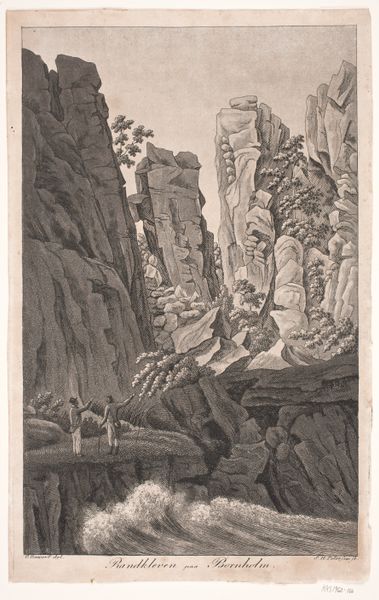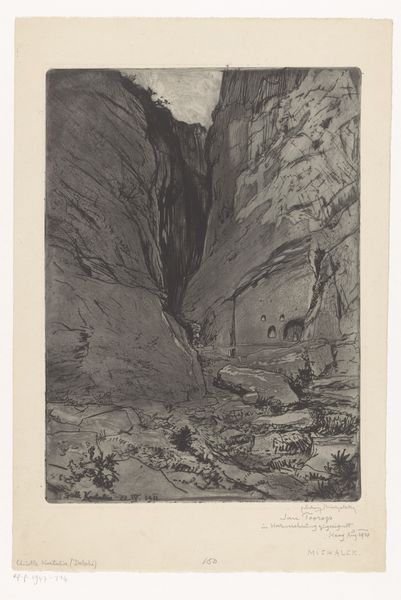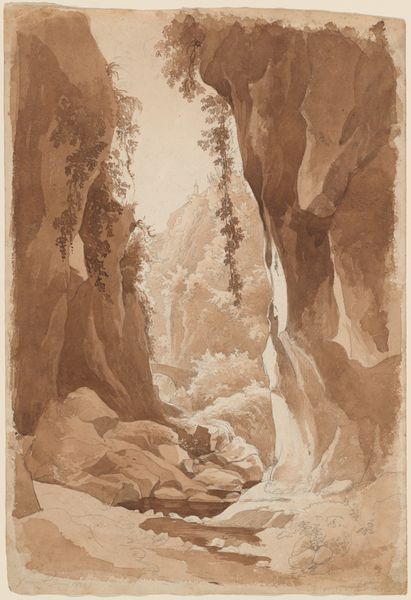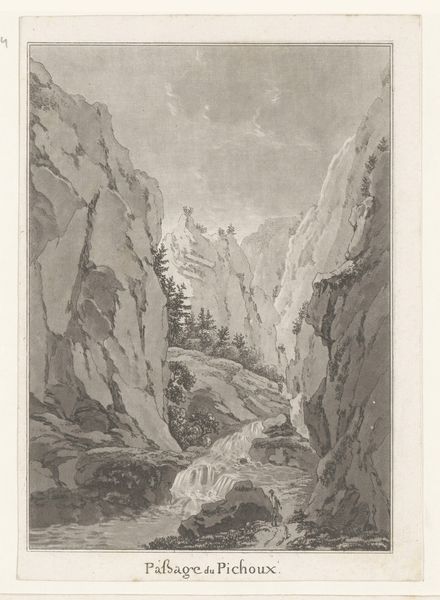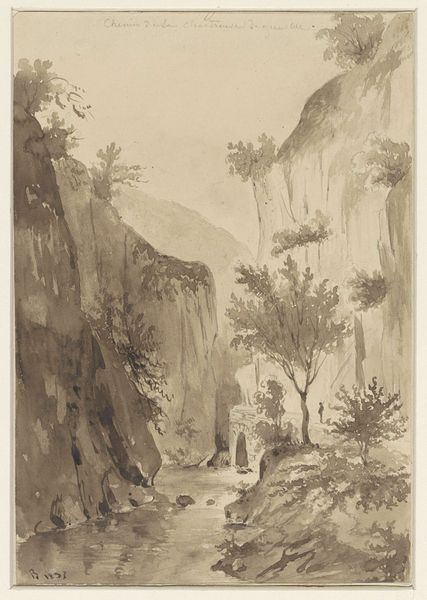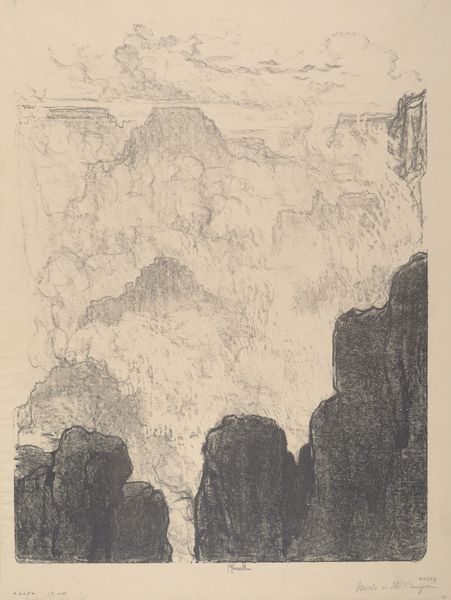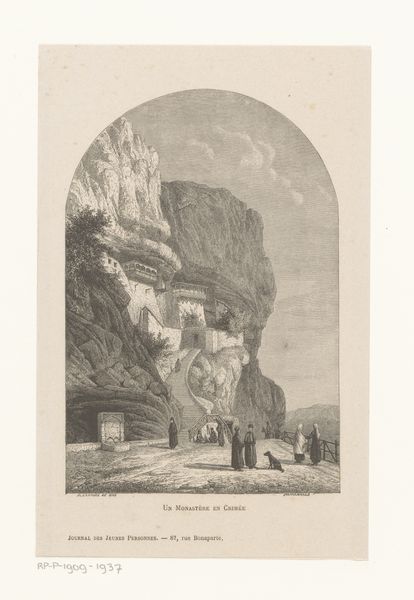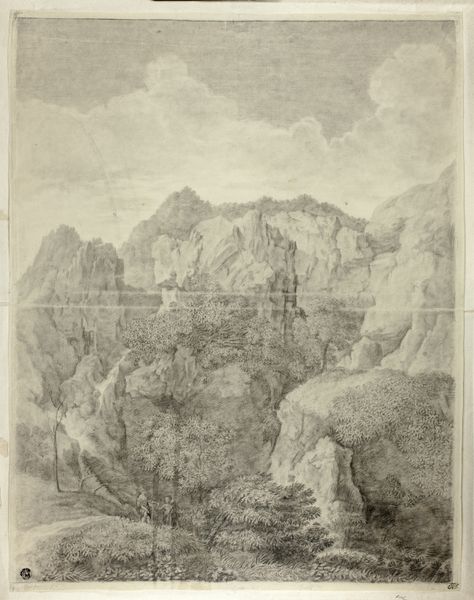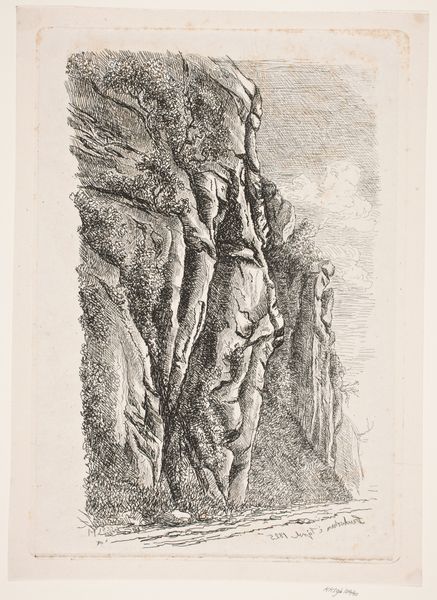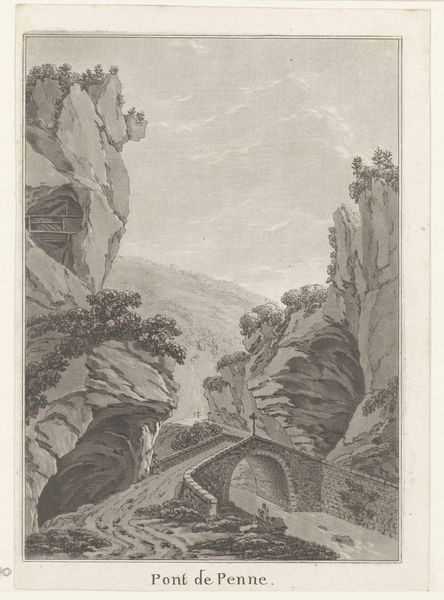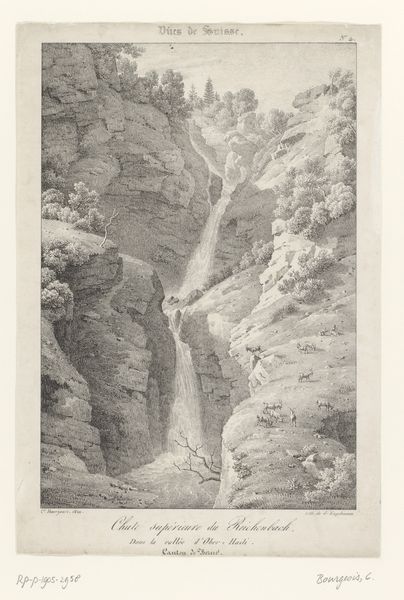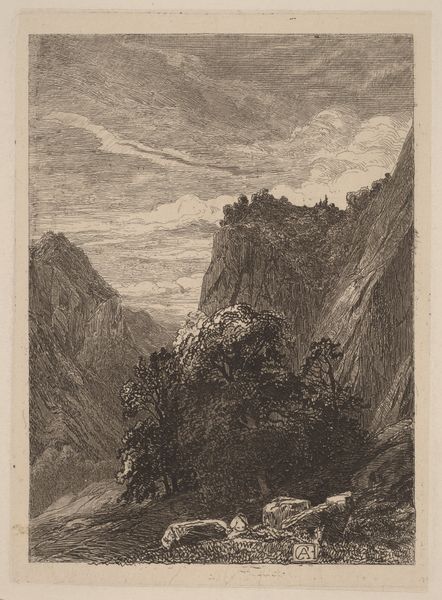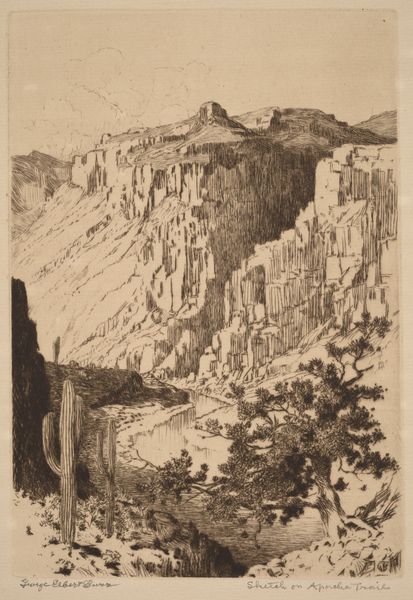
Dimensions: sheet: 18 3/4 x 15 9/16 in. (47.6 x 39.5 cm)
Copyright: Public Domain
Editor: This drawing by Daniël Dupré, dating between 1760 and 1817, titled "Figures Boating in a Gorge near Sorrento," is truly impressive with its dramatic cliffs. What is your take on this print? Curator: This work, to me, speaks volumes about the romantic idealization of nature. The very act of depicting a dramatic gorge transforms it into a spectacle for the burgeoning tourist culture of the late 18th and early 19th centuries. These picturesque scenes served as visual souvenirs for the wealthy, reinforcing their privileged access to such sublime landscapes. Have you thought about the way prints like this might democratize access, while simultaneously solidifying social hierarchies? Editor: That's a great point about access! It is accessible as a print, yet, still catered to the wealthy. I hadn’t considered that duality. The tiny figures amplify the grandeur of nature, too. Curator: Exactly. The figures aren't just incidental; they emphasize human insignificance against nature’s overwhelming power. Dupré’s work falls within a broader fascination with sublime landscapes. One might even read it as a commentary on the political turmoil of the era, the French Revolution and its aftermath, where nature's stability is posed against societal upheaval. What feeling do you get from that dark crevice? Editor: It feels foreboding but in a beautiful, fascinating way. The framing is very theatrical. Curator: And the theater it provides bolstered an understanding of the role art could and should play in national identity and even moral education through the visualization of grand landscapes, and nature. It's a carefully constructed image for a specific audience. Editor: This conversation has reshaped my perspective entirely. Thank you! Curator: Likewise! Examining art through its socio-political lens offers so much insight.
Comments
No comments
Be the first to comment and join the conversation on the ultimate creative platform.
